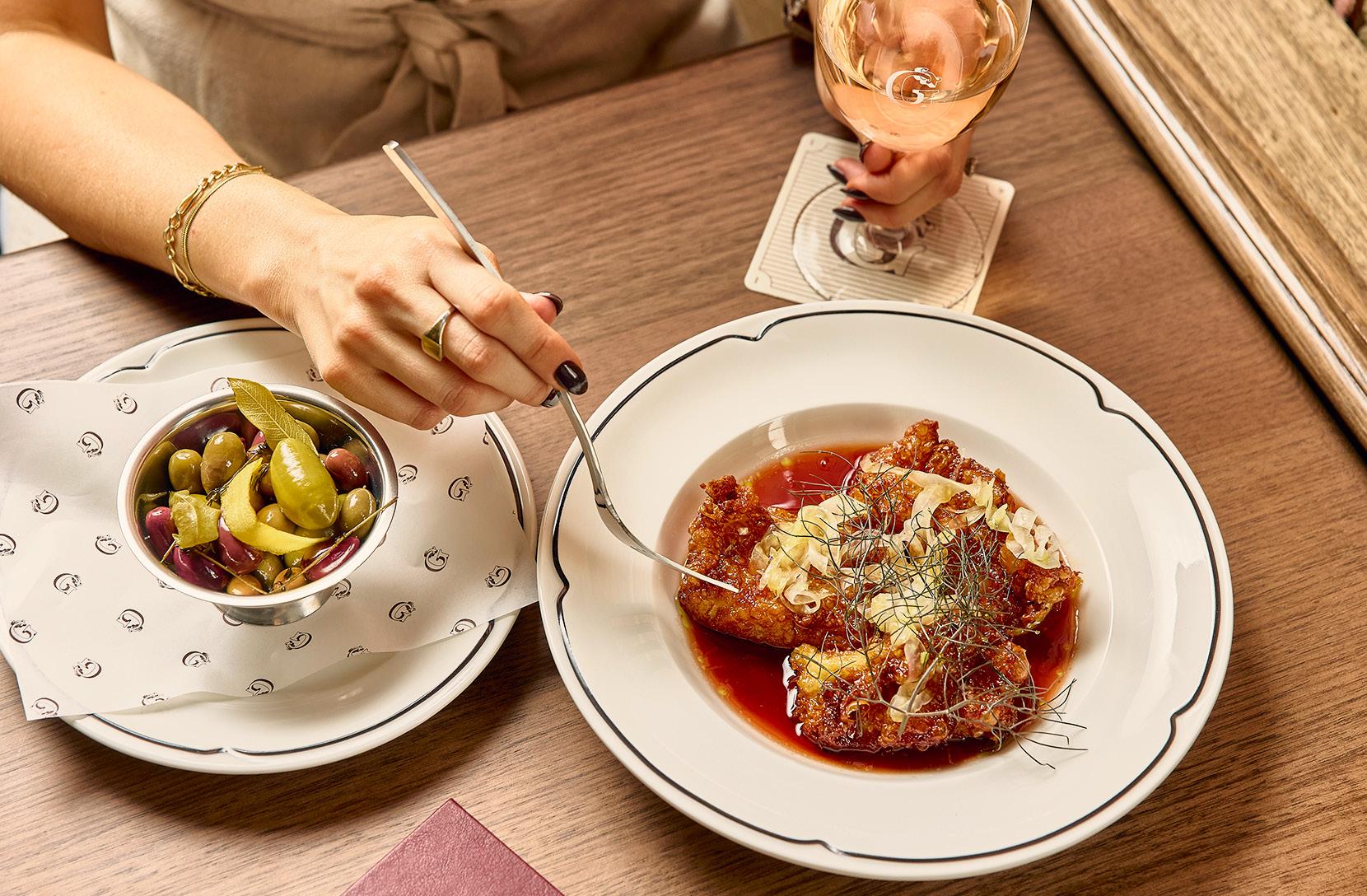
6 minute read
FEATURE: BRANDING
Make your mark
How physical branding influences customer experience.
WORDS Mathilde Delatte
IN THE HOSPITALITY world, branding doesn’t stop when a business’s Instagram feed or website inspires a customer to book a table. The brand experience isn’t just about how your venue looks online; it’s also about how it feels in real life. It’s what your customer touches, sees, hears, and senses the moment they walk through the door.
From the look of a waiter’s apron to the aesthetic of a ceramic plate — tangible details tell a story. And when they’re considered from the outset, they don’t just decorate a space, they define it.
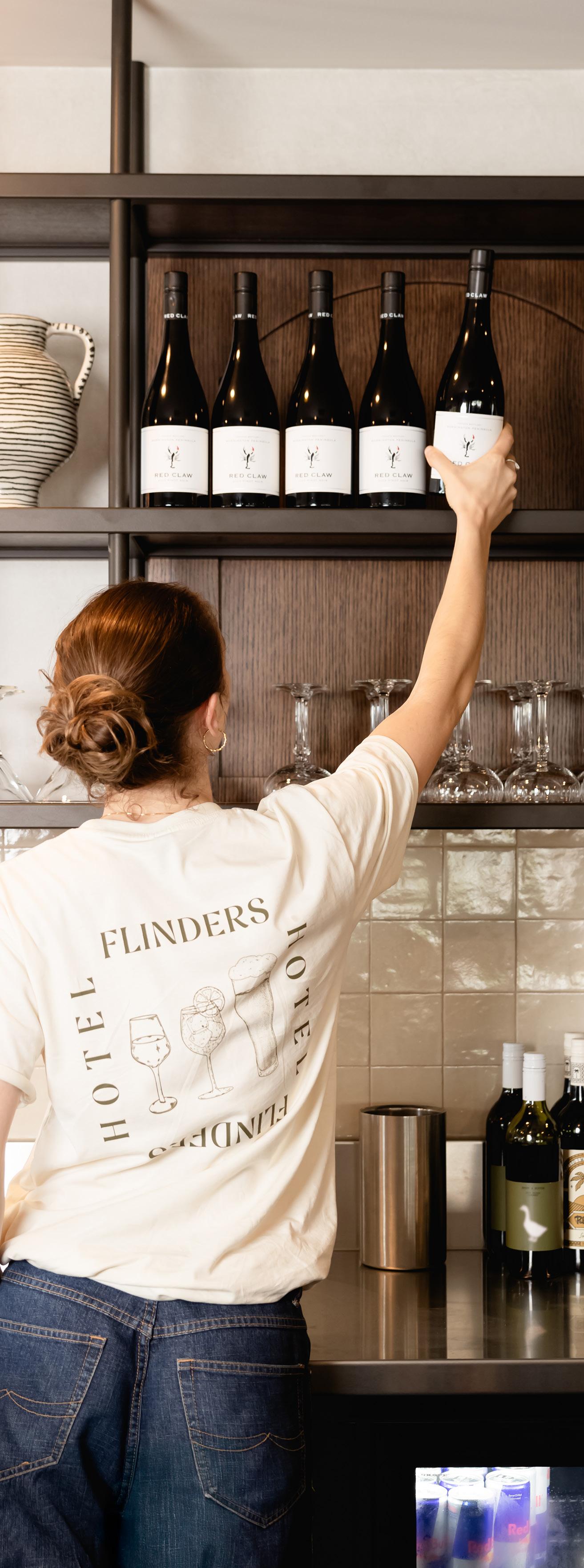
Branding is about transforming a marketing team or business owner’s vision into powerful experiences that cultivate customer loyalty. Australian Venue Co. shows how powerful physical branding can be when it’s embedded early on in the process in venues like The Gardiner, Quarterhouse, and Flinders Hotel.
“We’re seeing a shift toward more tactile, analogue experiences in response to digital fatigue,” says Australian Venue Co. Senior Brand Project Manager Pippa Finks. “Handwritten menus, textured walls, and imperfect ceramics are starting to become popular alongside curated scent design, which is becoming a serious part of a brand’s identity.”
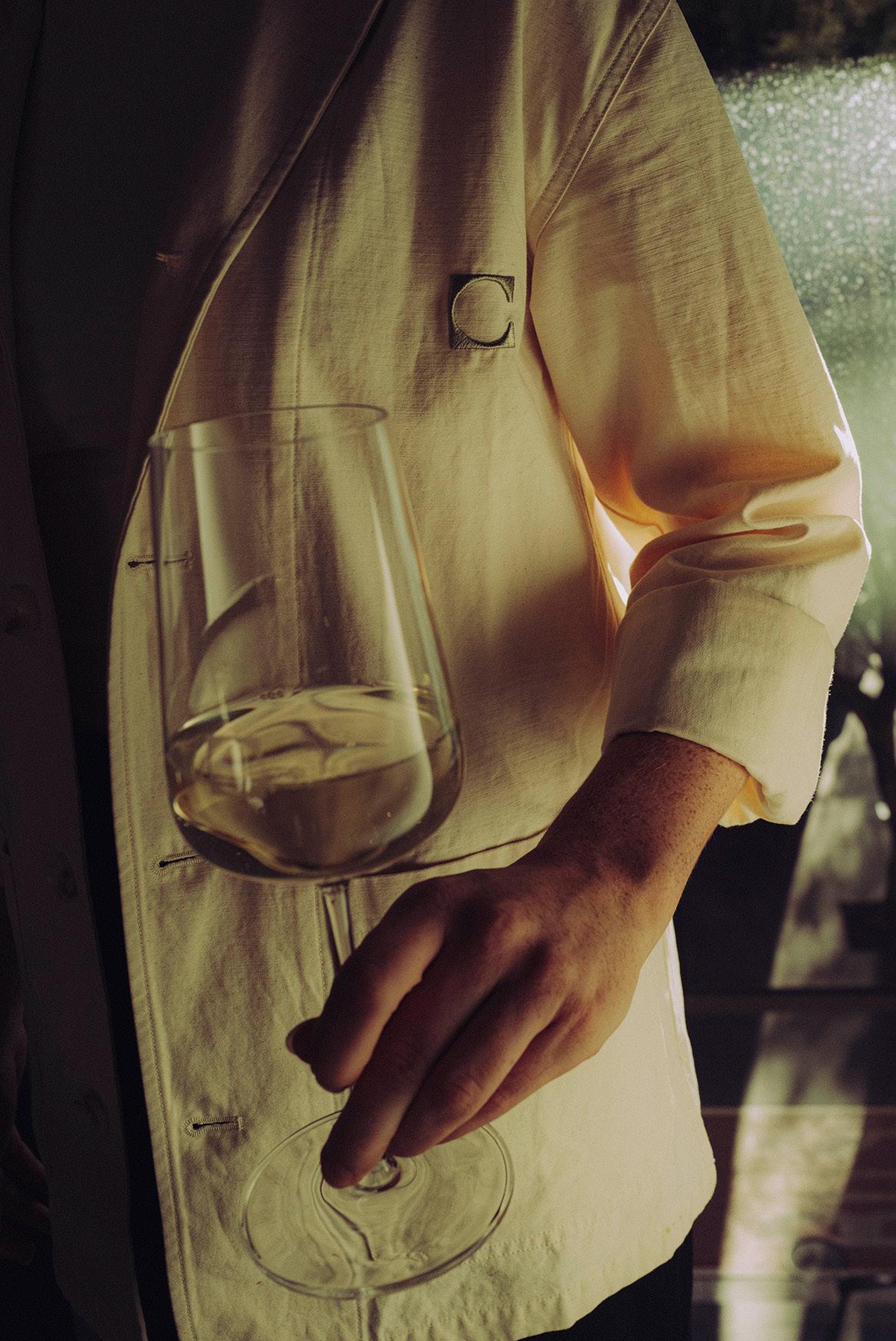
Having a vision for a venue’s physical space is crucial from the get-go. The location and interior schemes need to align with the brand — not just visually, but emotionally. From menus, uniforms, and signage to coasters and packaging, each design application is a way to test whether the brand message resonates with the right audience and feels at home within a hospitality venue. Because ultimately, the aesthetic patrons discover online or through word of mouth should be aligned with the physical space. The feeling doesn’t happen by accident; it happens when strategy, design, food, and service all work together in sync.
We’re seeing a shift toward more tactile, analogue experiences in response to digital fatigue.
– Pippa Finks
Alongside visual branding, sensory details embed a brand into a customer’s subconscious. They make a space memorable in a world that’s increasingly over-stimulated. Finks shares how Australian Venue Co. approaches this multi-sensory experience. “One of our recent projects, The Gardiner Hotel, features a rooftop terrace where we used things like patterned tiles, soft grassy landscaping, and a timber retractable roof layered alongside a bespoke native botanical scent in the bathrooms to connect the senses and experience throughout,” she says. “We also worked with a sound designer to curate playlists that help shift through different trading periods of the day and night from relaxed acoustics to up-tempo house. It helps shape energy levels and set the mood.” These immersive brand environments don’t just look good, they make guests feel like they belong. Once an emotional connection has been established, customers are more likely to engage, return to the venue, and share their experience.
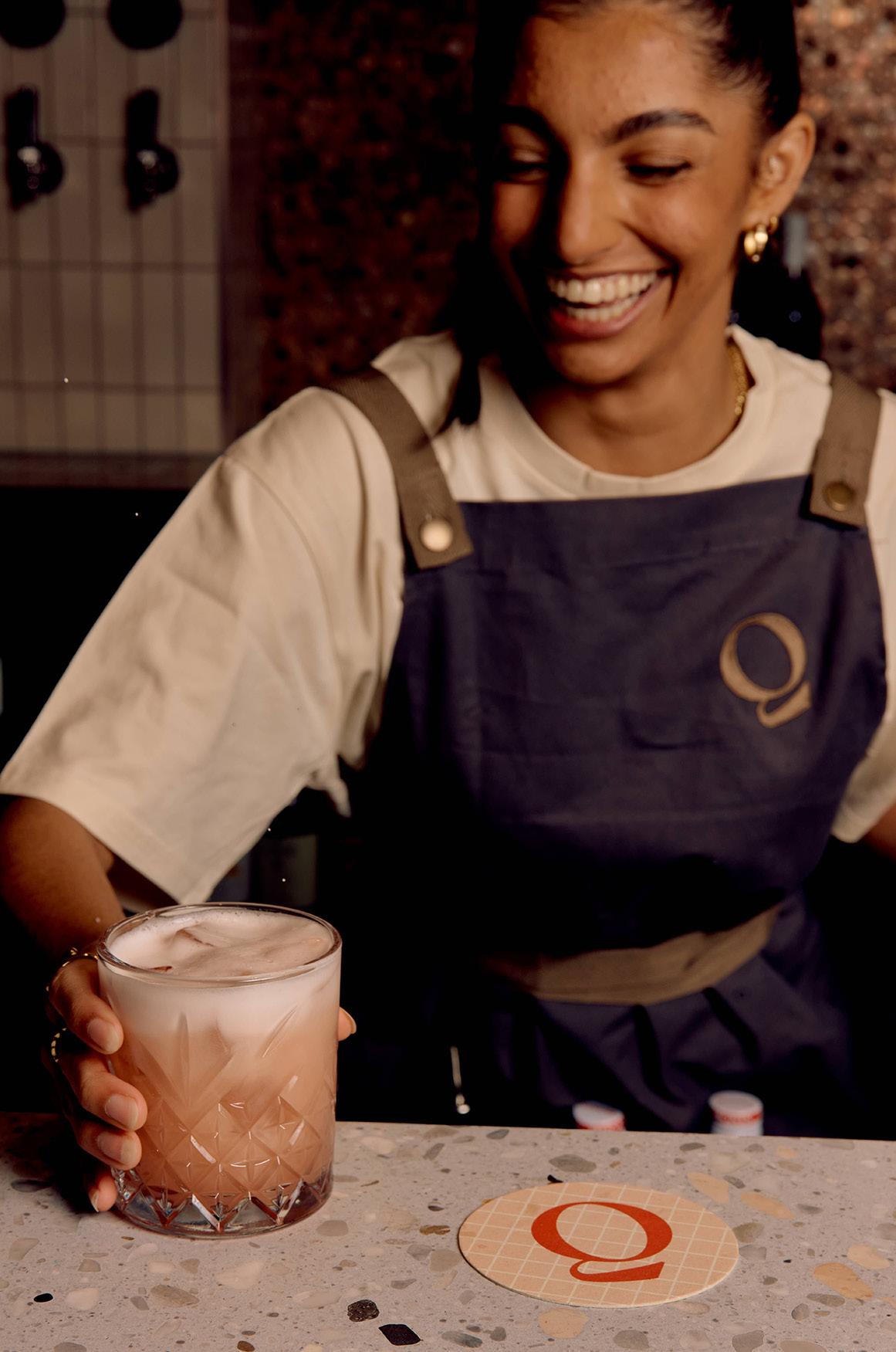
Uniforms are one of the most visible (and often overlooked) forms of physical branding. They signal intent, atmosphere, and values. They’re also what staff wear for hours on end, so practicality can’t be ignored. Huw Bennett’s studio Worktones has helped reshape the landscape of hospitality uniforms in Australia. When asked about balancing branding with practicality, Bennett commented that it is a topic up for daily discussion in the studio. “When using branding, we have to think firstly what application and/ or process will work best,” he says. “We can then try and explore options with product renders, sampling, or lab tests for colour and shrinkage. The process requires constant trial and error and is one we can never immediately answer for. It’s what makes what we do exciting, challenging, and ultimately rewarding.”
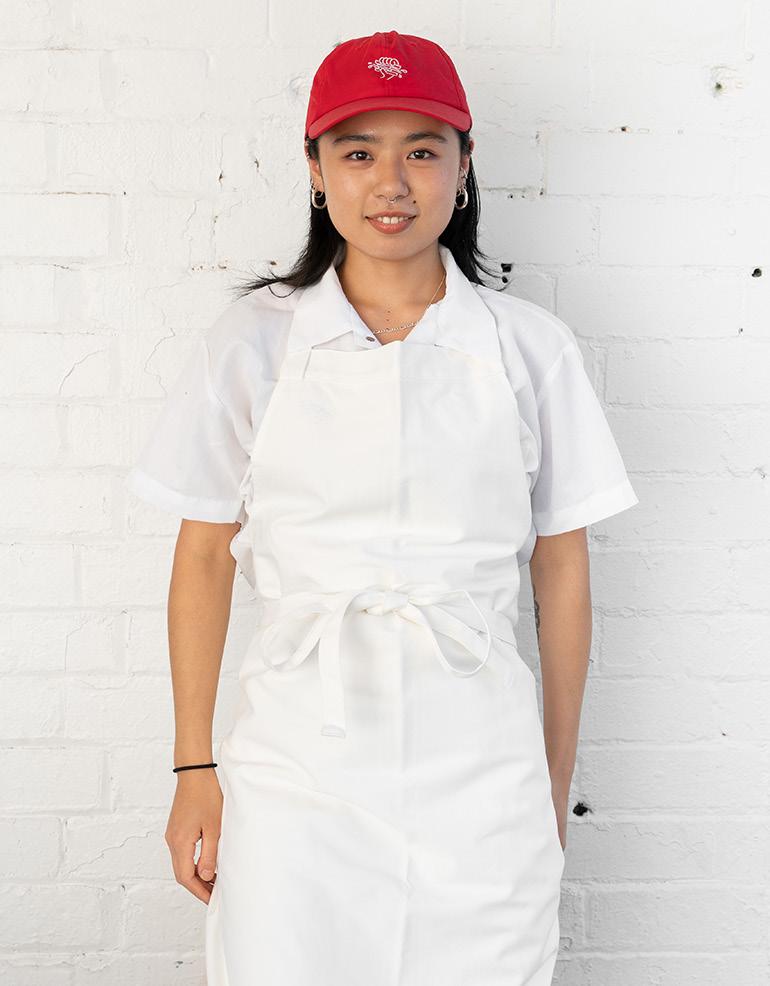
Worktones’ products are functional but never bland. The uniforms carry the spirit of a venue quietly, but confidently. Bennett says a standout moment so far was the development of the Hector’s Deli cap. “We first made it for the then-stand-alone Richmond location back in 2018 and have continued to produce for the brand,” he says. “The cap is a unique fit made for the client based on an old favourite they found on their travels and incorporates the smart branding and signature colours.” More than just an accessory, the hat became part of the identity of the venue. It is merchandise with emotional currency and something customers want to wear. Venues have turned patrons into superfans by selling items from tote bags to shirts and coffee mugs.

Like uniforms, tableware is storytelling at its most tactile. It’s a key physical point of contact that a guest has with a brand. “Tableware is something that helps set the tone of a venue and is a visual cue for customers whether they notice or not,” says Finks. “For example, white ironed tablecloths and silverware tells a different story to the casual and approachable spaces we try to create. Coloured tables, napkin materials, weight of plates, mixed table heights, bar stools, and banquette-style seating allow us to create and emulate the pub atmosphere we know people love.” These small, layered cues build a language that speaks directly to the customer. Every detail is part of the narrative, and that narrative can be deeply personalised.
When using branding, we have to think firstly what application and/or process will work best.
– Huw Bennett
Too often, branding is created in isolation. But the magic happens when passionate professionals such as chefs, designers, architects, and suppliers collaborate on a larger vision.
Physical branding is no longer a ‘nice to have’, it’s an investment that turns the curious into the converted and elevates your venue from a service to a story. “Alongside internal teams, we also engage various external suppliers early on in the branding process,” says Finks. “Everything from interior finishes, dishes on the menu, layout of the venue, staff training, uniforms, weekly events, wayfinding signage, and more are strategically considered and aligned to create a unified experience for our customers once the venue opens. These types of collaborations with other industry experts create unique venues and brand experiences — it’s all about sharing knowledge and leveraging strengths.”
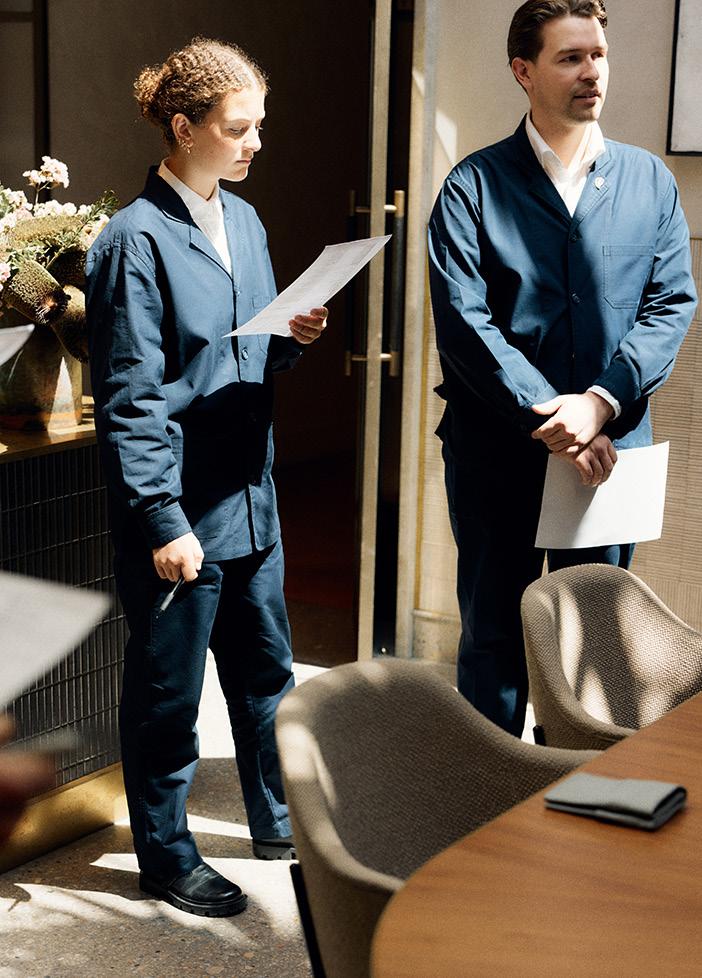
The collaborative spirit is what transforms a collection of talented individuals into a unified brand experience that guests not only notice but feel. When every detail works harmoniously from menus and uniforms to tableware and service, a venue becomes more than a place to simply eat and drink — it becomes a destination where people feel nurtured, connected, and eager to return.




